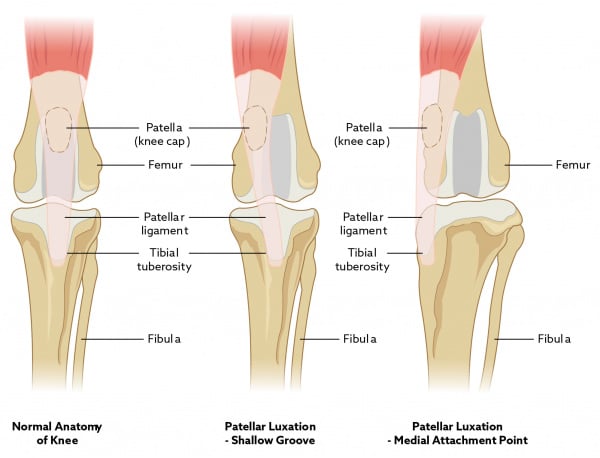
Patella-patella in dogs is shaped like an almond and its purpose is to assist in knee extension. The patella resides in the tendon of the quadriceps muscle group which attaches to the bone below the femur, the tibia

- Grade I – patella can be manually luxated but returns to normal position when released.
- Grade II – patella luxates with stifle flexion or on manual manipulation and remains luxated until stifle extension or manual replacement occurs.
- Grade III – patella luxated continually, and can be manually
replaced but willreluxate spontaneously when manual pressure is removed. - Grade IV – patella luxated continually and cannot be manually replaced.

![Full text] Patellar luxation in dogs | VMRR](https://www.dovepress.com/cr_data/article_fulltext/s142000/142545/img/VMRR-142545_F003.jpg)
Dogs with grade I patellar luxation are generally asymptomatic; however, they can present occasionally a “skipping” type lameness typical of dogs with grade II patellar luxation. Sometimes, on examination, a mild internal rotation of the tibia and abduction of the hock can be observed. Grade II luxation can evolve to a grade III due to the progressive erosion of the trochlear ridge and lead to more severe clinical signs, as a result of chronic degenerative joint changes.
Grade III and IV patellar luxations are usually characterized by persistent lameness and abnormal posture. Bilateral medial luxation can determine abnormal, “crouched” gait rather than lameness, leg constantly semiflexed and internally rotated, as well varus deformity of the stifle. In case of lateral dislocation, the stifles appear to be close to each other while the distal extremities are abducted









No comments: